

St. Catherine of Siena
Feast Day:April 29
Born:1347 :
Died:1380
Catherine was born at Siena, Tuscany in Italy. Catherine was the youngest in a family of twenty-five children. When she was six years old Jesus appeared and blessed her. Her mother and father wanted her to be happily married. But, Catherine wished only to be a nun. To make herself as unattractive as possible, she cut off her long, beautiful hair. Her parents were very upset and scolded her often. They also gave her the most difficult housework to do. But Catherine did not change her mind. Finally, her parents stopped bothering her and allowed her to become a nun.
St. Catherine was very honest and straightforward with Jesus and scolded him when he was not around to help her in her struggles and temptations. Jesus told her that because he was in her heart she was able to win her struggles by his grace. In those days the Church had many problems. There were fights going on all over Italy. Catherine wrote letters to kings and queens. She even went to beg rulers to make peace with the pope and to avoid wars. Catherine asked the pope to leave Avignon, France, and return to Rome to rule the Church as it was God's will. He listened to St. Catherine and did as she said. Catherine never forgot that Jesus was in her heart. Through her, Jesus helped the sick people she nursed and comforted the prisoners she visited in jail. This great saint died in Rome in 1380 when she was just thirty-three. She is the patroness of Italy, her country. Hundreds of years later St. Catherine was named a Doctor of the Church. She received this great honor because she served Jesus' Church boldly during her short lifetime.
AUTUMN NEWSLETTER
AUTUMN CROSS CURRICULAR PLANNING
FOUNDATION SUBJECT PLANNING AUTUMN
AUTUMN TIMETABLE
NEWSLETTER SPRING
TIMETABLE SPRING
FOUNDATION SUBJECT PLANNING SPRING 2025
CROSS CURRICULAR PLANNING SPRING 2025
NEWSLETTER SUMMER TERM
TIMETABLE SUMMER TERM
CROSS CURRICULAR MAP SUMMER
FOUNDATION SUBJECT PLANNING SUMMER
Mrs Egboh is our class teacher in St Catherine. Mrs Bertolino and Mrs Gusciglio are our Teaching Assistants.
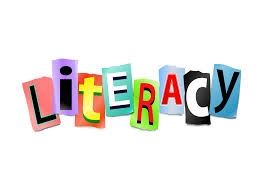


Unit 1: Portal stories
When writing, the children will:
-
use varied sentence starters
-
use varied openers for each paragraph
-
write in cohesive paragraphs
-
use the third person
-
use similes to describe
-
use personification
-
use purposeful dialogue.
Unit 2 – Famous artists
When writing, the children will:
-
clearly explain their opinions
-
identify new words and synonyms
-
retrieve simple facts and answer a range of questions
-
retrieve, record, sequence and summarise information from non-fiction texts - biographies
Unit 3 – Adventure stories
When writing, the children will:
-
identify and use nouns and pronouns
-
identify, create and use expanded noun phrases
-
use fronted adverbials
-
use apostrophes accurately
-
use and punctuate direct and indirect speech accurately
-
write in cohesive paragraphs
Unit 4 - Chocolate
When writing, the children will:
-
use retrieval skills
-
identify new words and discuss their meaning in context
-
explain and justify using evidence from the text
-
sequence, summarise and order events
-
differentiate between fact and opinion
-
use varied punctuation
Unit 5 – Magic spell poetry
When writing, the children will:
-
explore and analyse poems
-
use and develop their inference and vocabulary skills
-
create and continue a rhyming pattern
-
write using stanzas
Unit 6 – 20th-century music
When writing, the children will:
-
identify and use relative pronouns
-
identify and use relative clauses
-
identify and use embedded relative clauses
Click on the link below for helpful information and activities which are all literacy based;

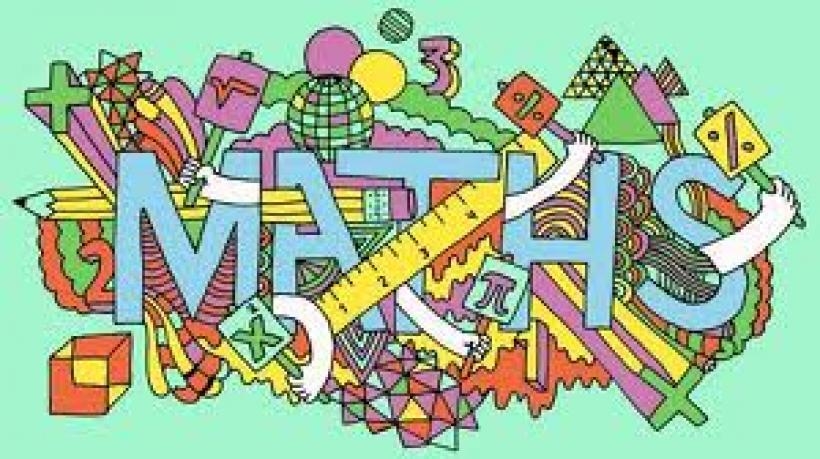
Block 1: Place Value
Numbers to ten million
Read and write numbers to 10,000,000
Powers of 10.
Number line to 10,000,000
Compare and order any integers
Round any integer
Negative numbers
Block 2: The 4 Operations
Square and cube numbers
Multiply up to a 4-digit number by a 2-digit number
Solve problems with multiplication
Short division
Division using factors
Introduction to long division
Long division with remainders
Solve problems with division
Solve multi-step problems
Order of operations
Mental calculations and estimation
Reason from known facts
Block 3: Fractons A
Equivalent fractions and simplifying
Equivalent fractions on a number line
Compare and order (denominator)
Compare and order (numerator)
Add and subtract simple fractions
Add and subtract any two fractions
Add mixed numbers
Subtract mixed numbers
Multi-step problems
Block 4: Fractions B
Multiply fractions by integers
Multiply fractions by fractions
Divide a fraction by an integer
Divide any fraction by an integer
Mixed questions with fractions
Fraction of an amount
Fraction of an amount – find the whole
Block 5: Converting Measures
Metric measures
Converting metric measures
Calculate with metric measures
Miles and kilometres
Imperial measures
Add or multiply?
Block 6: Ratio
Use ratio language
Introduction to the ratio symbol
Ratio and fractions
Scale drawing
Use scale factors
Similar shapes
Ratio problems
Proportion problems
Recipes
Block 7: Algebra
1-step function machines
2-step function machines
Form expressions
Substitutions
Formulae
Form equations
Solve 1-step equations
Solve 2-step equations
Find pairs of values
Solve problems with two unknowns



























Energy, light and reflection
In this unit the children (working at secure level) will:
compare sources of light and explain how the eye is protected from light
describe how light travels and how we see luminous and non-luminous objects
recall factors that affect the size of a shadow and describe how the distance between an object and the surface its shadow is cast on affects the size of the shadow
use ray diagrams to explain why shadows change size and why the shadow matches the object that was cast
recall what happens to light when it reaches a smooth mirror surface
identify the incoming and reflected rays and describe the relationship between the angles
use mirrors to make a working periscope and explain how a periscope works using ray diagrams
recall a range of uses of mirrors and reflection, describe how a mirror reflects light in different situations and explain how light is reflected using knowledge of light and reflection.
Working scientifically
When working scientifically, the children (working at secure level) will:
• make observations about the properties of light
• use my observations as evidence to support conclusions about light
• draw scientific ray diagrams
• pose testable questions in response to their observations
• record results of their investigation in a line graph
• use their line graph to extrapolate data and make predictions about missing values.
Energy – circuits, batteries and switches
In this unit, the children (working at secure level) will:
describe the function of key electrical components
predict if an electrical circuit will work or not, and explain why using their knowledge of complete loops, power sources and the presence of components
describe the relationship between the number of bulbs in a circuit, the bulb brightness and the amount of resistance
explain that increasing the number of components increases the resistance, affecting the flow of current and energy transferred
identify that batteries are a voltage source; they come in different voltages, affecting bulb brightness
describe that voltage can be changed using a different number of cells in a circuit, and that more cells or a higher voltage cause brighter bulbs
use the relationship between voltage and bulbs to predict what will happen with buzzers and motors
build an electrical circuit with a switch to control its function, explain how the switch and the electrical circuit solve the problem and recall different examples of problems that can be solved using an electrical circuit.
Working scientifically
When working scientifically, the children (working at secure level) will:
draw circuit diagrams with straight lines and using standard circuit symbols
design a results table with an appropriate number of columns and headings with units
identify the changed, measured and control variables in an enquiry to plan a method.
Click on the link below for helpful information and activities which are all science based;

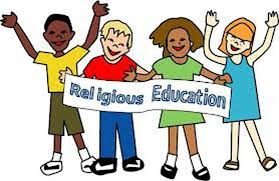


Creation and Covenant
In this unit, the children will:
-
revise the story of creation from Genesis 1:1-2:4a and identify what we learn about God
-
explore the story of creation from Genesis 2:4b-25
-
explore Genesis 3:1-24
-
make links between Laudato Si and Genesis 2
-
explain how Baptism forgives original sin and starts new life in Christ
-
use the Gospel of John and the Nicene Creed to understand how Jesus (the new Adam) restores our relationship with God
-
learn about a Catholic scientist and explore faith and science together
-
explore what the fall says about human beings and suffering
-
write a reasoned argument (assessed writing) in response to a given statement – ‘Belief in creation is compatible with scientific accounts of the beginning of the universe and the theory of evolution’.



.gif)
.gif)
.gif)
History: Exploration
Threshold Concepts Covered
Main Events
Travel and Exploration
Vocabulary
Society
By the end of the unit, the children will be able;
To identify famous British explorers and place them on a timeline.
To explain some of the advantages of exploration.
To understand how exploration influenced British attitudes to people from different countries and to recognise how these changed over time.
To compare and contrast the experiences of 3 different explorers.
To recognise and understand the difference between migration and exploration.
To recognise and suggest reasons why Europeans called the area discovered by Christopher Columbus the New World.
To organise information about Mount Everest and the people who have climbed it.
To recognise why it is an important mountain to climb.
To suggest reasons why the kings and queens of Europe encouraged explorers to sail to new worlds.
To organise information about Amelia Earhart and consider what makes her achievements particularly significant.
To suggest reasons why most explorers in history have been men and to find out more about female explorers

Online Safety
National Curriculum Objectives covered:
By the end of the unit, the children will be able;
• To use technology safely, respectfully and responsibly.
• To recognise acceptable/unacceptable behaviour.
• To identify a range of ways to report concerns about content and contact.
Bletchley Park – Unit 1
National Curriculum Objectives:
By the end of the unit, the children will be able;
• To solve problems by decomposing them into smaller parts.
• To use logical reasoning to explain how some simple algorithms work and to detect and correct errors in algorithms and programs.
• To design, write and debug programs that accomplish specific goals, including controlling or simulating physical systems; solve problems by decomposing them into smaller parts.
• To use sequence, selection, and repetition in programs; work with variables and various forms of input and output.
• To select, use and combine a variety of software […] to design and create a range of programs, systems and content that accomplish given goals, including collecting, analysing, evaluating and presenting data and information
• To use search technologies effectively, appreciate how results are selected and ranked, and be discerning in evaluating digital content.
• To use technology safely, respectfully and responsibly; recognise acceptable/unacceptable behaviour; identify a range of ways to report concerns about content and contact.
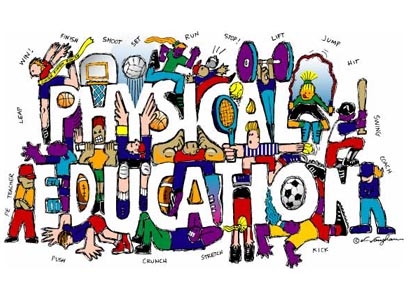
2x 45 minutes session taught by external company non-stop action.
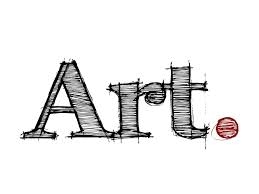
Futurism
Threshold Concepts Covered
-
Artists and Artisans
-
Visual Language
-
Colour Theory
-
Effects
-
Techniques
-
Process
-
Emotions
By the end of the unit, the children will be able;
-
identify the techniques used by futurists
-
recognise and use divisionism
-
recognise how futurists often used aspects of modern life in their work
-
recognise the kinds of emotions this use of modern life created
-
explore some famous Italian Futurist artists.
-
name some artists from other countries who were inspired by Italian futurists and compare their work
-
critically explore Giacomo Balla’s Street Light painting
-
summarise the reasons why the artist Giacomo Balla was an influential figure to Boccioni
-
describe the features of Bocciono’s masterpiece sculpture
-
create their sculpture in the style of Boccioni.
-
experiment with Boccioni’s advocated materials in their sculpture
-
compare and contrast Boccioni’s use of line in his paintings with that of Piet Mondrian in his Cubist style
-
plan their Futuristic style artwork
-
create their clay sculpture using distorted poses to give the effect of dynamism and movement
-
evaluate their piece of work.

D&T – Come dine with me unit
Design
In this unit, the children will:
• use research and develop design criteria to inform the design of innovative, functional, appealing products that are fit for purpose, aimed at particular individuals or groups
• generate, develop, model and communicate their ideas through discussion, annotated sketches, cross-sectional and exploded diagrams, prototypes, pattern pieces and computer-aided designs.
Cooking and nutrition
In this unit, the children will:
• understand and apply the principles of a healthy and varied diet
• prepare and cook a savoury dish (spaghetti bolognese) using a range of cooking techniques
• understand seasonality, and know where and how a variety of ingredients are grown, reared, caught and processed.
Make
• select from and use a broader range of tools and equipment to perform practical tasks (for example, cutting, shaping, joining and finishing) accurately
• select from and use a broader range of ingredients.
Evaluate
evaluate their ideas and products against their design criteria and consider the views of others to improve their work.
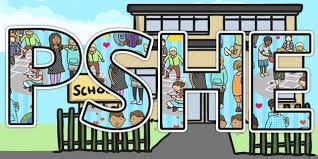
SRE
Unit 1 – Religious Understanding- “Created and Loved By God.”
This unit explores the Gospel story of the ‘Calming of the Storm’ (from Matthew, Mark and Luke). Over five story sessions, children will consider experiences of change, growth and development, and the trust that they can have in the person of Jesus through times of trial and tribulation. This is the religious and spiritual foundation for the exploration throughout the rest of the work covered in Module 1: Created and Loved By God.
Unit 2 – Me, My Body, My Health
The children will learn that celebrating differences between people is enriching to a community and know that their self-confidence should arise from being loved by God. They will learn about the physical changes that boys and girls go through during puberty and how they should respect and take care of their bodies as gifts from God. Genitals are also mentioned here, but not named and identified.